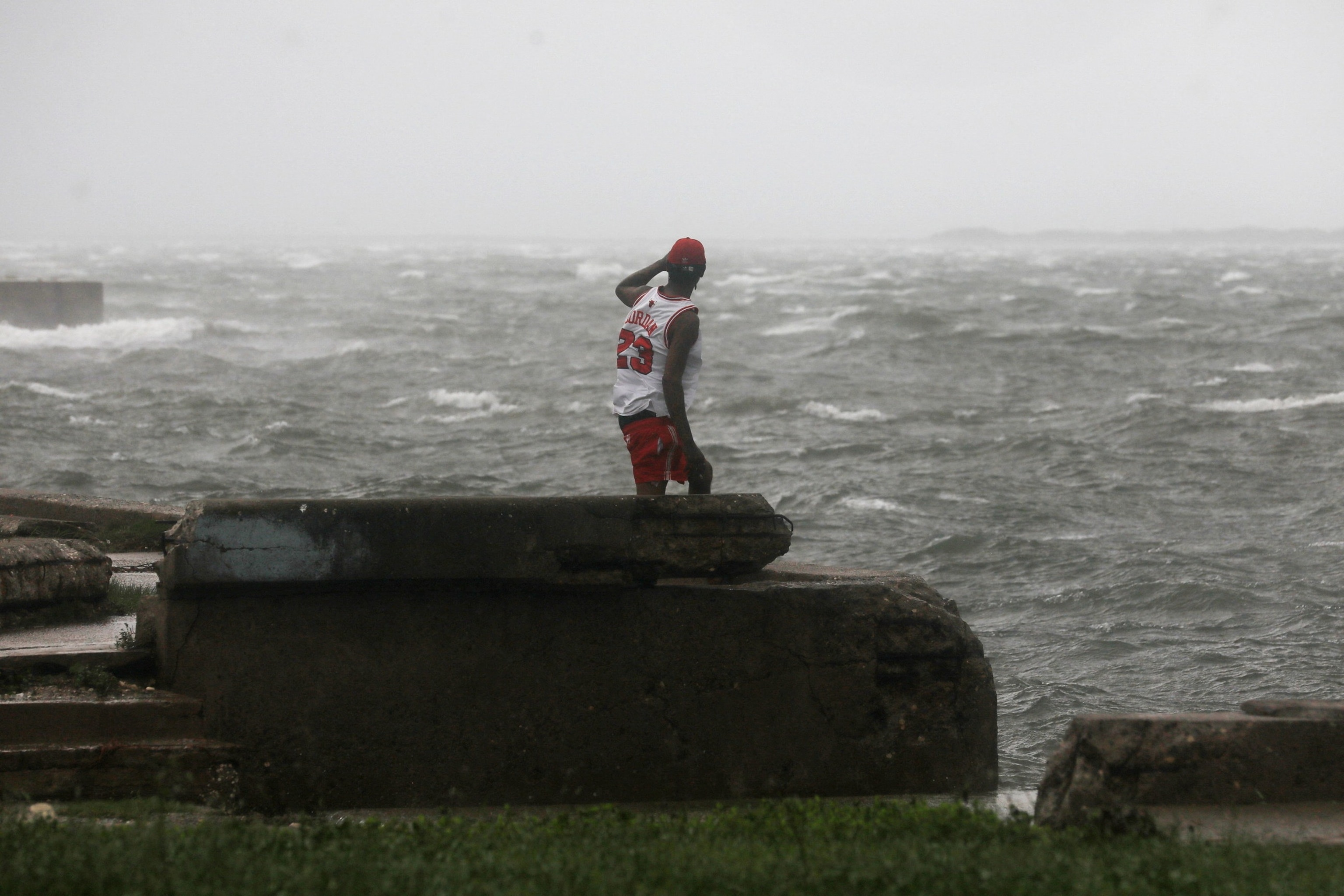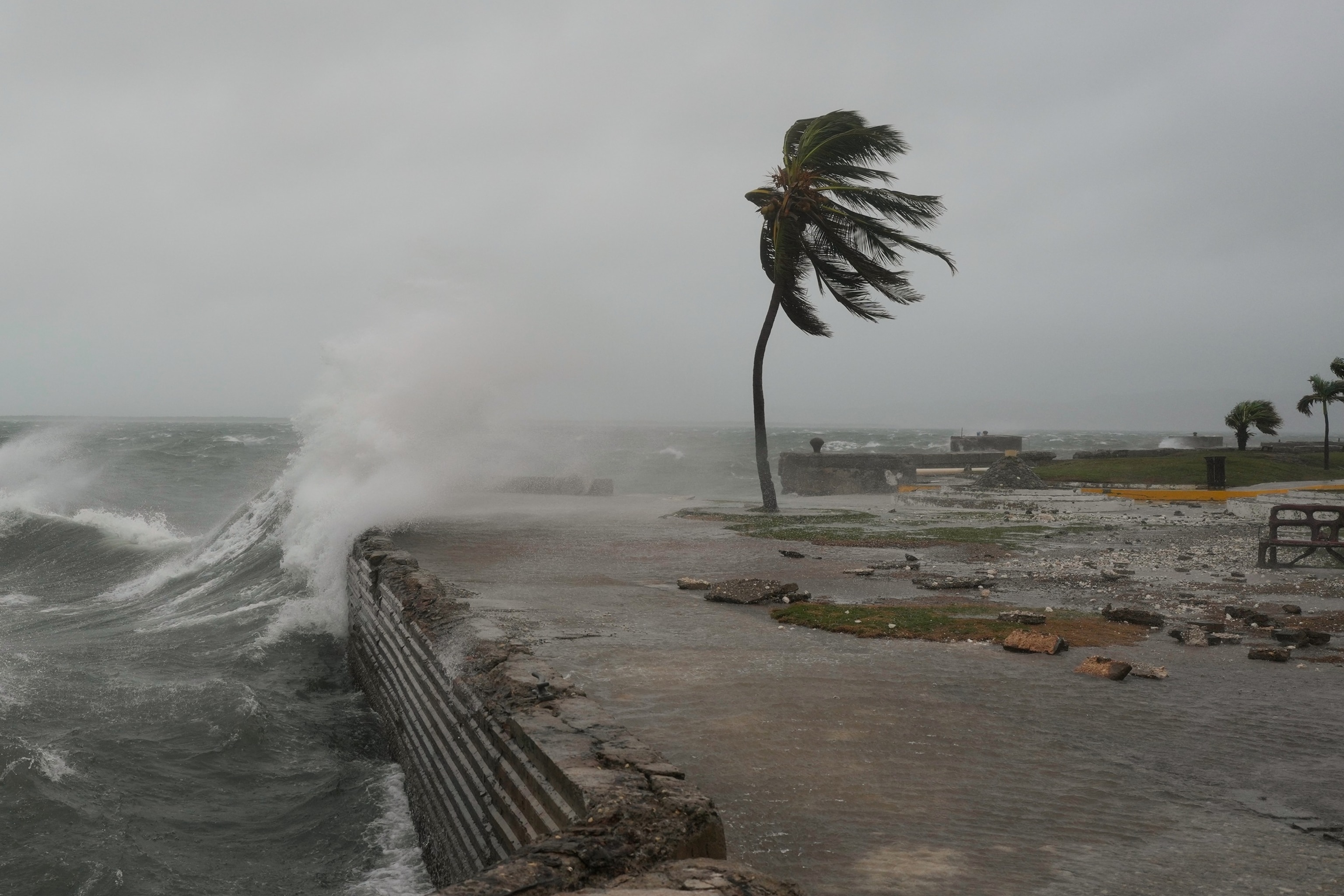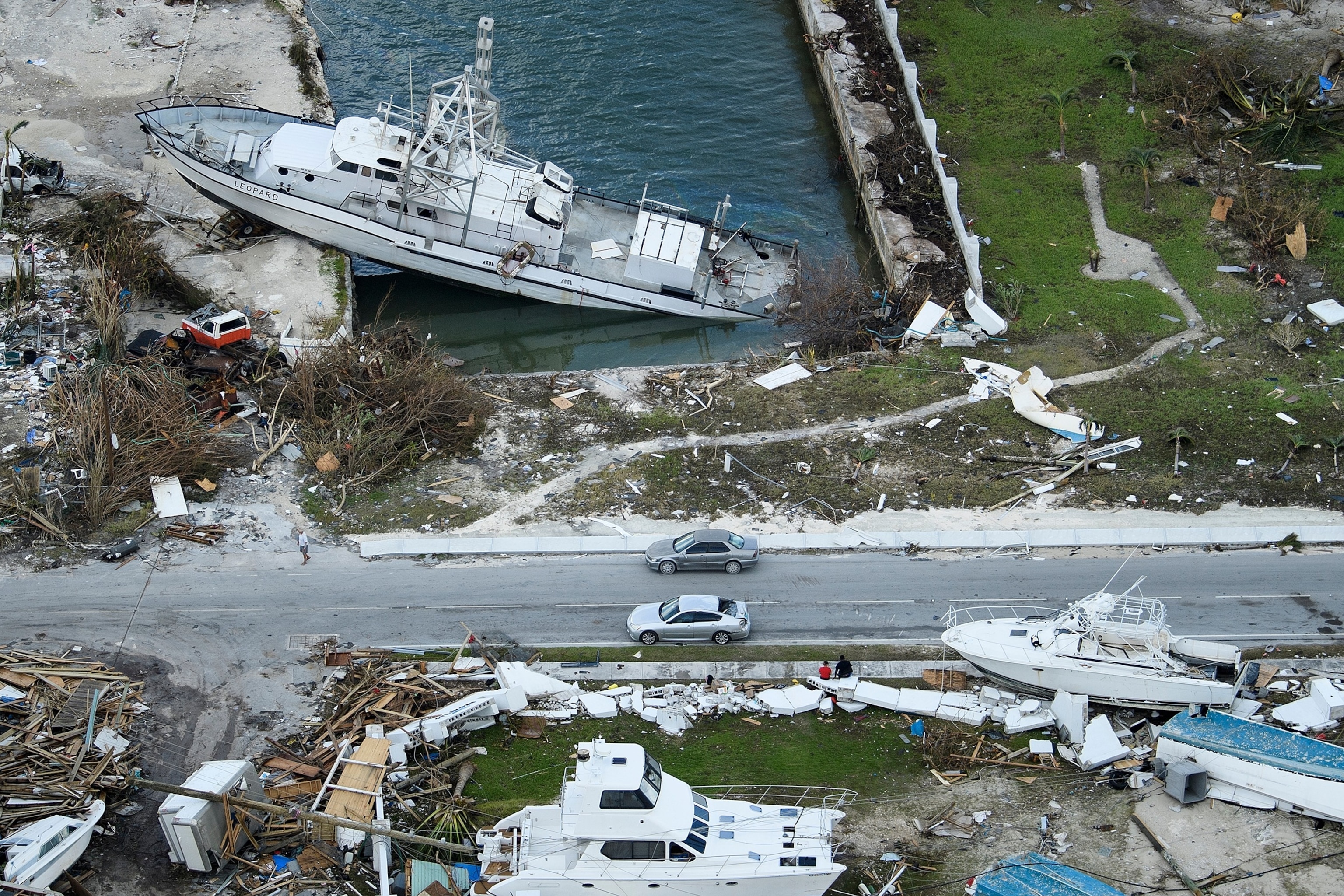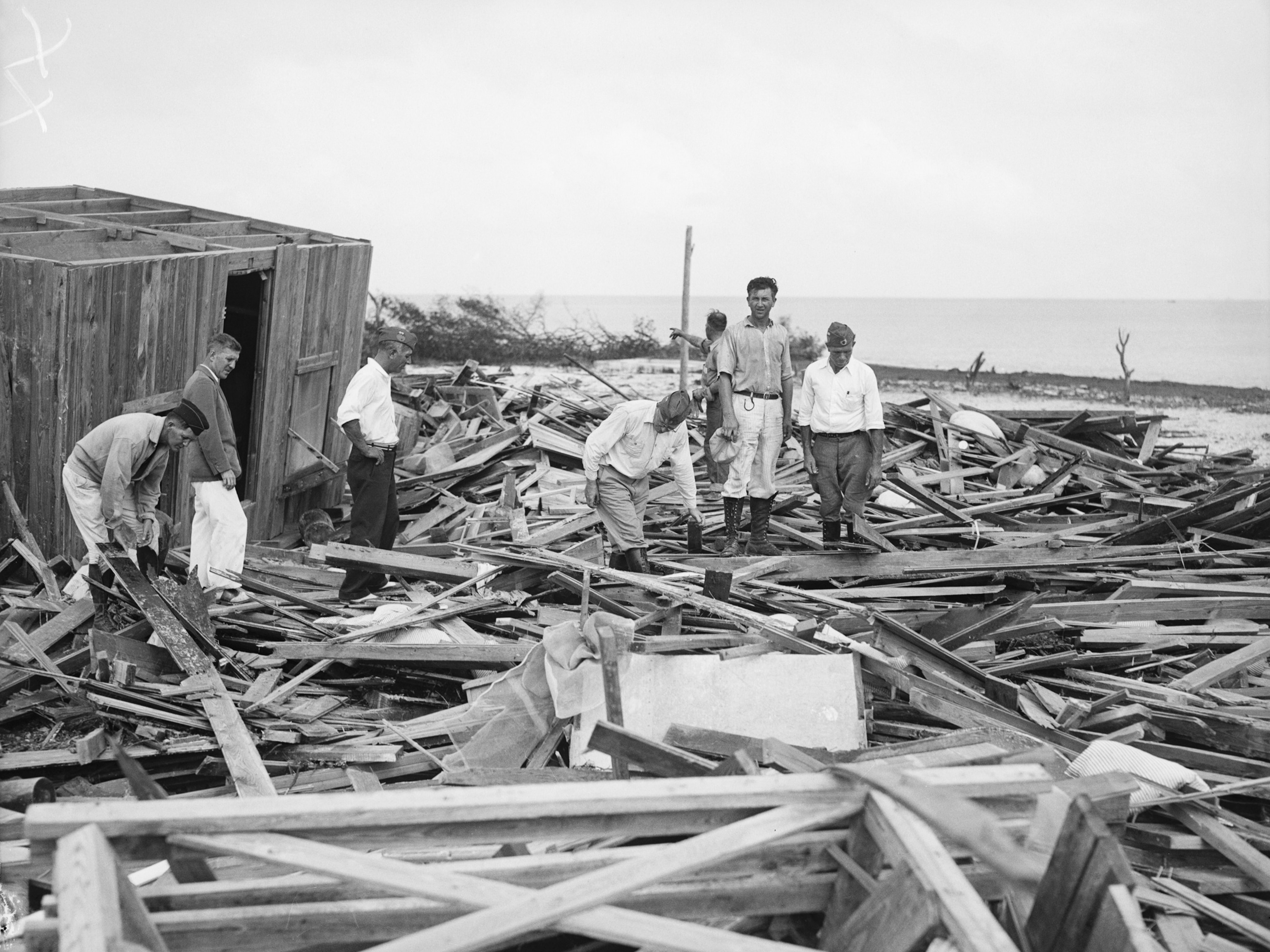Hurricane Melissa became one of the most powerful hurricanes ever recorded to make landfall in the Atlantic basin.
Melissa made landfall Tuesday afternoon in southwest Jamaica near New Hope as a Category 5 hurricane with maximum sustained winds of 185 mph, according to the National Hurricane Center. The storm then swept through western Jamaica, causing catastrophic winds, flash flooding and storm surge across the island.

A man watches the waves as Hurricane Melissa approaches in Kingston, Jamaica, on October 28, 2025.
Octavio Jones/Reuters
The hurricane is in a three-way tie with Hurricane Dorian (2019) and the “Labor Day” hurricane (1935) for strongest sustained winds at landfall, records show.
Hurricane Dorian made landfall near Elbow Cay, Bahamas, on September 6, 2019, with maximum sustained winds of 185 mph, according to the National Weather Service. It is the strongest hurricane on record to make landfall in the Bahamas.
Dorian destroyed thousands of homes and caused $3.4 billion in losses in the Bahamas, according to a report from the Inter-American Development Bank. At least 74 people died as a result of the storm, according to the CNH.

Waves splash in Kingston, Jamaica, as Hurricane Melissa approaches, October 28, 2025.
Matías Delacroix/AP
On September 2, 1935, the “Labor Day” hurricane also made landfall in the Florida Keys with maximum sustained winds of 185 mph, according to the National Hurricane Center.
An estimated 409 people died as a result of the storm, which destroyed most man-made structures in the Florida Keys, according to the Hurricanes: science and society website.

An aerial view of the damage caused by Hurricane Dorian, September 5, 2019, in Marsh Harbor, Great Abaco Island in the Bahamas.
Brendan Smialowski/AFP via Getty Images
In recent years, climate change has been overloading tropical systems forming in the Atlantic.
Human-caused climate change has caused significant warming of the oceans, which provide the energy hurricanes need to form and intensify. More than 90% of the excess heat trapped by greenhouse gases has been absorbed by the oceans, creating conditions that can turn tropical storms into powerful hurricanes, resulting in more storms reaching Category 4 or 5 intensities, according to recent research.
Besides, sea level riseDriven by melting polar ice caps and thermal expansion of seawater, they exacerbate the impact of storm surges, causing significant coastal flooding.
Climate change is also influencing the frequency of large storms. While the total number of hurricanes may not have increased, the frequency of major Category 3 and higher hurricanes has increasedscientists say.

A typical scene anywhere in the Florida Keys these days, as rescue workers search the hurricane-ravaged land of Sept. 7, 1935, for more victims of last Monday’s 100-mile-per-hour hurricane, which killed an estimated 250 people.
Bettmann Archive/Getty Images
Hurricane Melissa is also the strongest storm ever to make landfall in Jamaica, after Hurricane Gilbert hit the island as a Category 4 storm with maximum sustained winds of 130 mph in September 1988.
Melissa’s dangerous conditions were expected to continue throughout the day Tuesday, and those trapped on the island would experience a “catastrophic storm,” Rosimar Ríos-Berrios, a scientist at the National Center for Atmospheric Research, told ABC News.
“As our oceans continue to warm due to climate change, storms are becoming stronger and faster, producing more intense downpours and creating conditions that are increasingly dangerous for communities,” Ríos-Berrios said. “We urgently need immediate recovery programs as well as long-term solutions for a more climate resilient future.”
Melissa’s winds were so strong that “hurricane hunters” who flew into the eye of the storm were forced to turn back due to severe turbulence, the U.S. Air Force Reserve’s 53rd Weather Reconnaissance Squadron announced Tuesday.
Hurricane chasers also had to abandon the storm early Monday after experiencing severe turbulence, the National Hurricane Center said.
ABC News’ Dan Peck contributed to this report.

